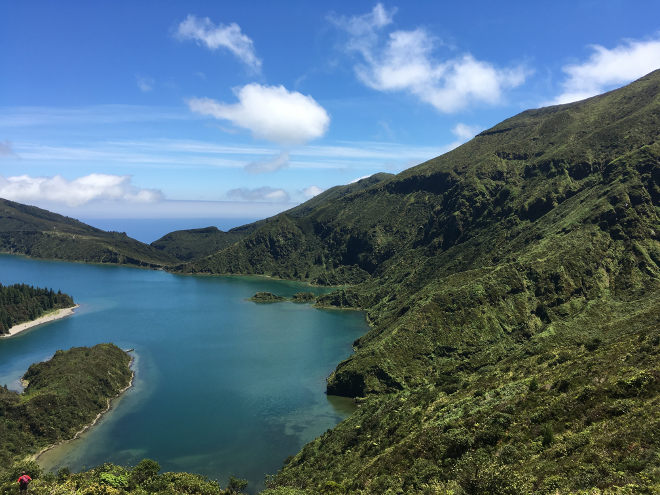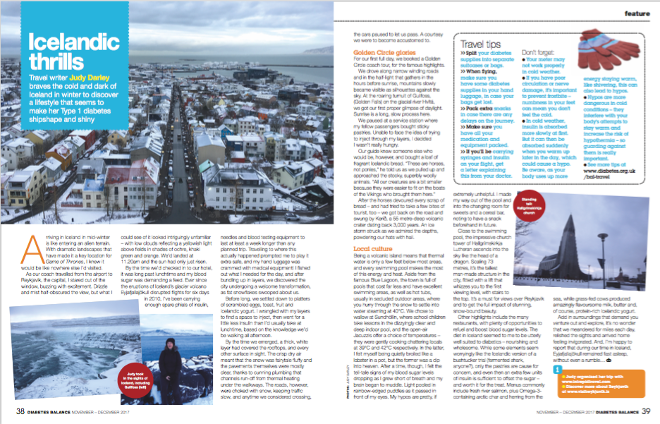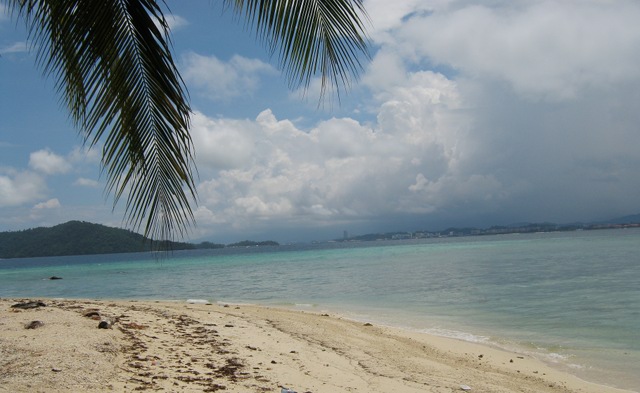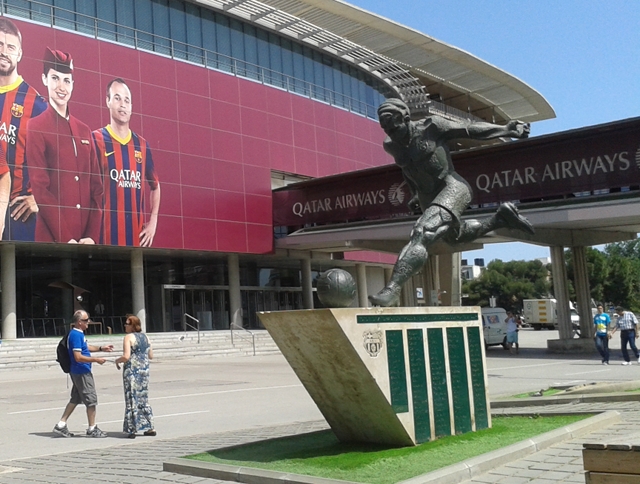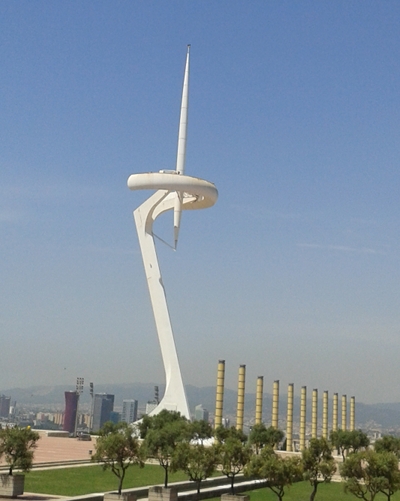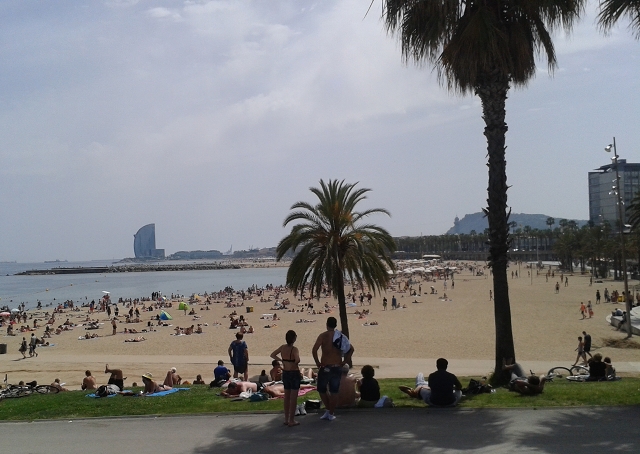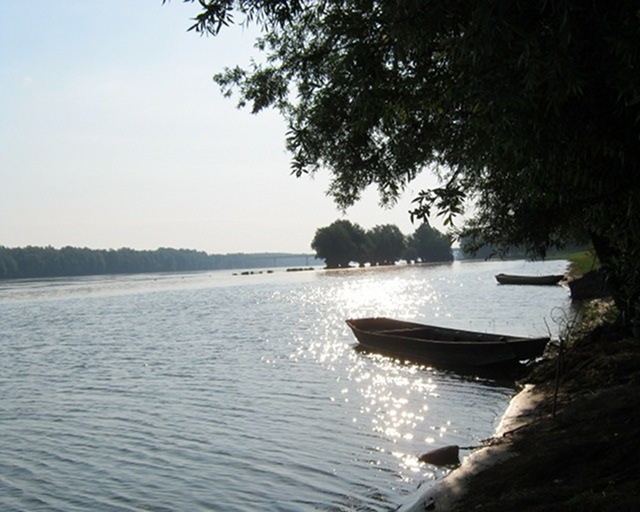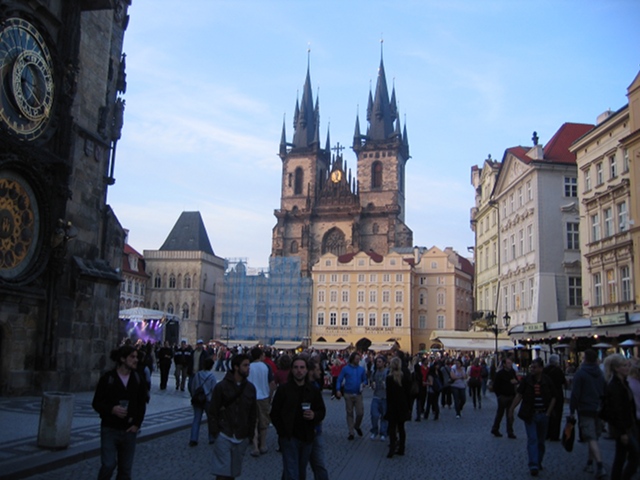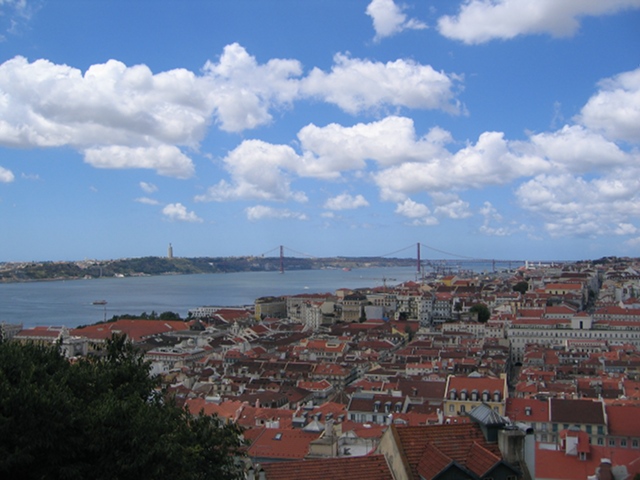 A hush falls as an elegantly dressed woman stalks among the crowded tables, coming to a halt into the centre of the room. A guitar is gently strummed, then the laments begin.
A hush falls as an elegantly dressed woman stalks among the crowded tables, coming to a halt into the centre of the room. A guitar is gently strummed, then the laments begin.
I sit in near-darkness in a room crammed with Portuguese Fado aficionados, all listening intently. Not a single fork scrapes against a single plate. I haven’t experienced Fado before. Part of me was expecting something akin to the explosiveness of Spanish Flamenco, but Portugal’s national song is far more contemplative. I don’t understand the words, but the sentiment is clear, and shivers race up and down my spine.
“Fado translates as fate,” Carmo tells me when the performance ends. “Many of the songs are about beloveds who never returned home from sea.”
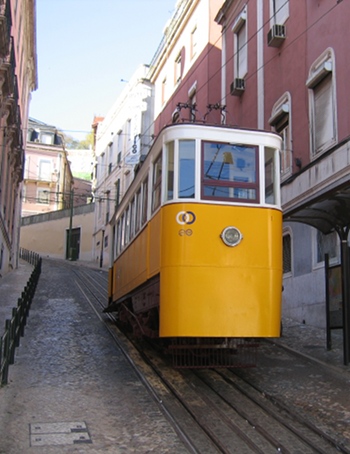 I’ve only been in Lisbon a matter of days, but the area around Clube de Fado, the Alfama district, is already one of my favourites. When we return in the morning, only a little the worse for wear, Carmo reminds me that it survived the great earthquake of 1755, so retains a sense of the small city as it would have been long before then, with washing hanging haphazardly between wrought iron balconies and steep, narrow streets. “Many homes here still don’t have their own bathrooms,” she comments, an note that could equally be horror or pride in her voice.
I’ve only been in Lisbon a matter of days, but the area around Clube de Fado, the Alfama district, is already one of my favourites. When we return in the morning, only a little the worse for wear, Carmo reminds me that it survived the great earthquake of 1755, so retains a sense of the small city as it would have been long before then, with washing hanging haphazardly between wrought iron balconies and steep, narrow streets. “Many homes here still don’t have their own bathrooms,” she comments, an note that could equally be horror or pride in her voice.
The streets are stacked one above the other another, giving the impression they were built in haste, yet it’s hard to imagine anything here ever being done in a hurry – even the trams amble like commuter-crammed caterpillars.
There’s a curious beauty about the Alfama, with some of the houses beautifully tiled. Most feature at least one small painted tile paying homage to a saint, and keeping the homeowners’ family safe from harm. This is a place where fate is taken seriously – anything you can do to safeguard your family is done.
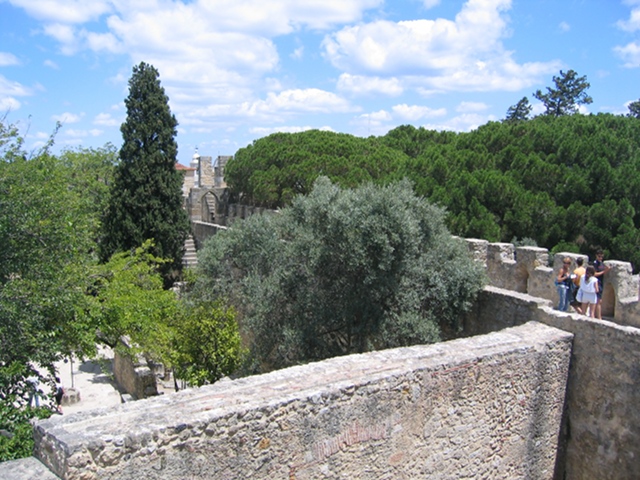
Above all this sits Castelo de São Jorge, where we wander through dappled sunlight and drink in panoramic views that showcase the city like a painted tableau. Despite the tourists, it is peaceful here – people murmur as they pose beside cannons, and cameras whir gently. Terracotta roofs are stacked above creamy buildings, and the strong, rectangular towers of churches rise above all else.
Far to my left I glimpse a crimson bridge that seems oddly familiar. “It was designed by the same company as San Francisco’s iconic Golden Gate bridge,” Carmo says.
Ah, that explains it. The river it spans is the Tagus, a thread of water that broadens at times into an estuary lake so wide it resembles a sea, yet it narrows as it nears the sea – seeming reluctant to leave.
It’s an impulse I can relate to. I wonder how Portugal‘s explorers could bring themselves to head out to the unknown, knowing they might never make it safely home.
“This is my favourite place in Lisbon,” Carmo says, eyes half closing in bliss. “You know, don’t you, that the city was founded by Ulysses?”
I ask her to repeat herself. Surely Ulysses, the one I’m thinking of, is a fictional hero.
She shrugs, either uncertain or not caring. “I like to imagine him standing here on this hillside and saying, yes, this is good, this is home.”
Discover Barcelona.
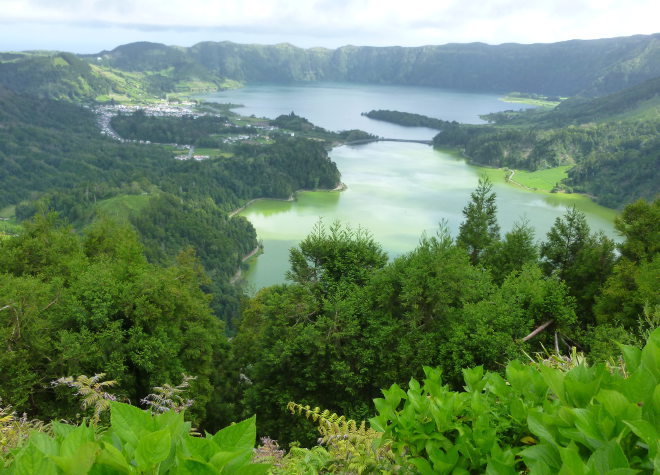 I often find myself moved to write strange and dreamy fictions while travelling. For instance, my story Two Pools of Water, inspired by a trip to the Azores, and published this week by dear damsels.
I often find myself moved to write strange and dreamy fictions while travelling. For instance, my story Two Pools of Water, inspired by a trip to the Azores, and published this week by dear damsels.
